On May 9, 2025, Governor Kathy Hochul signed Assembly Bill A3009 into law, enacting New York State’s fiscal plan for 2025–2026. The legislation introduces several tax, payroll, and credit changes that affect individuals, families, employers, and key industries across the state. It intends to support working families, invest in infrastructure, and respond to the rising cost of living.
Below are some of the most significant updates to consider:
Estimated Taxes:
Effective January 1, 2026, the threshold for filing estimated taxes increases from $1,000 to $5,000, reducing the number of taxpayers required to make quarterly payments.
Metropolitan Commuter Transportation District (MCTD) Payroll Tax:
Effective July 1, 2025, the Metropolitan Commuter Transportation District (MCTD) is divided into two zones with tiered payroll tax rates for employers based on quarterly payroll amounts. The new zone structure applies higher payroll tax rates in Zone 1 (NYC) compared to Zone 2 (suburban counties), increasing costs for businesses with larger payrolls, especially in NYC.
- Zone one counties: Bronx, Kings (Brooklyn), New York (Manhattan), Queens, and Richmond (Staten Island).
- 0.055% for payroll greater than $312,500 and no greater than $375,000
- 0.115% for payroll greater than $375,000 and no greater than $437,500
- 0.60% for payroll greater than $437,500 and no greater than $2.5 million
- 0.895% for payroll greater than $2.5 million (0.60% local government employers)
- Zone two counties: Dutchess, Nassau, Orange, Putnam, Rockland, Suffolk, and Westchester.
- 0.055% for payroll greater than $312,500 and no greater than $375,000
- 0.115% for payroll greater than $375,000 and no greater than $437,500
- 0.34% for payroll greater than $437,500 and no greater than $2.5 million
- 0.635% for payroll greater than $2.5 million (0% for local government employers)
Effective January 1, 2026, the individual self-employment earnings threshold for the MCTD tax also increases from $50,000 to $150,000 per year. The raised threshold exempts those self-employed individuals earning less than150,000 from the MCTD payroll tax.
Personal Income Tax:
Middle-Class Tax Cuts: The budget provides a 0.1% reduction in the tax rate for the five lowest income brackets in 2026 and another 0.1% reduction in 2027.
High-Income Surcharge: The high-income surcharge on millionaires is extended through 2032.
Covered Properties:
Effective May 9, 2025, the law limits depreciation and interest deductions for institutional owners of large commercial and multi-family properties.
Property Tax:
Effective May 9, 2025, the law increases income eligibility for Enhanced School Tax Assessment Relief (STAR) exemptions.
Tax Controversy:
Effective May 9, 2025, taxpayers must report federal partnership audit adjustments within 90 days. Adjustments from before that date must be reported within one year.
Appeals: When a taxpayer accesses information through the Department of Taxation and Finance’s system, accessing that system to receive information does not give the right to a hearing in the Division of Tax Appeals, nor does a written notice advising of a past-due tax liability. The law also adds electronic notices by the Division of Taxation to notices that are the basis for a protest to the Division of Tax Appeals.
Sales Tax:
Effective June 1, 2025: New York State will exempt certain vending machine transactions from sales tax. Specifically, sales of food and beverages sold for $1.50 or less through vending machines will no longer be subject to state sales tax.
New and Expanded Tax Credits:
The legislation introduces and enhances several tax credits:
- Empire State Child Credit: Up to $1,000 per child under four years old, and $330–$500 for children aged four to sixteen years old, depending on tax year
- Inflation Refund Credit: One-time refund of $150–$400 in 2025 based on income and filing status
- Geothermal Energy Credit: Cap increased to $10,000 for systems installed after July 1, 2025
- Semiconductor Industry Credits: Includes wage, R&D, and investment incentives for semiconductor supply chains
- Manufacturing Training Credit: Up to $25,000 per employee, capped at $1M–$5M depending on industry, for workforce development
The bill includes additional tax incentives across more sectors, including agriculture, film, renewable energy, and clean transportation. These are designed to stimulate growth, support job creation, and promote sustainability.
To explore the complete list of tax changes and eligibility requirements, you can view the full bill text here: Assembly Bill A3009 – NY State Senate.
What’s Next?
Our Grassi Advisors are closely monitoring the impact of the 2025–2026 state budget and can guide you through planning strategies, credit eligibility, payroll tax exposure, and more.
For more information on how New York’s latest tax legislation might impact your finances or your organization’s bottom line, please reach out to a Grassi Advisor today or contact Jeff Cohen, Partner and Tax Services Leader; TJ Beary, Partner and SALT and Tax Controversy Practices Leader; or Matthew McCullough, Principal in Tax Controversy, at Grassi.

